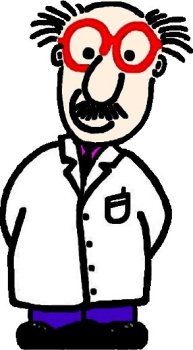 Hypothesis-Driven History Taking
Hypothesis-Driven History Taking
______________________________________________________________________________
Objective
This module has been
developed to teach First Year Medical Students the process
of clinical reasoning
and how to take a medical history using a hypothesis-driven
approach that emphasizes pattern recognition.
What's at Stake
Stritch School of Medicine seeks
to train students to be both astute clinicians and
compassionate care-givers.
This Hypothesis-Driven History-Taking Project aims to
accelerate the process by which medical students achieve
proficiency in clinical reasoning, as well as skillfulness
in their history taking abilities.
Context
Over the past century the
defining paradigm for health care has gradually shifted from
a provider-centered model
to
a patient-centered approach. Some practitioners,
however, have
resisted this shift, believing that "patient-centered
medicine" means
"giving over control" to patients.
What patient centered medicine actually calls for is recognizing the unique competence and perspectives of both
physician and patient with the ultimate goal being service
to patients and their well-being.
Evidence suggests that such a patient-centered approach,
particularly as it has helped to strengthen the physician-patient
relationship, can have a favorable impact on patient satisfaction,
health outcomes, compliance, and even malpractice claims.
The literature, however, also
suggests that one of the barriers to effective communication between
physician and patient,
are
physician behaviors that too narrowly focus on diagnosis and
treatment at the expense of empathy, patient education,
and building trust.
Quality medical care, today, demands that
clinicians be proficient in communication and relational skills
as
well as in their
diagnostic acumen!
Physicians must recognize their
need to be astute
diagnosticians operating effectively within the richer and more nuanced
bio-psycho-social-spiritual model that now defines the physician-patient relationship.
But these abilities are not
"factory-installed equipment" in aspiring clinicians -- they
must be learned, nurtured and developed.
This module on Hypothesis Driven History Taking, therefore,
seeks to expose students, early in their training, while
they are learning
the value of Patient Centered Medicine, to the process of
clinical reasoning.
We believe that doing so will not only strengthen and
accelerate the students' acquisition of clinical skills, but
it will foster these
abilities in a patient-centered framework.

______________________________________________________________________________
Taking A Patient History.
The medical interview is now seen as an opportunity for a
clinician to accomplish three goals:
-
Gather information (relevant to patients' concerns
and to clinical diagnoses)
-
Establish relationship (showing empathy and developing
trust while attending to patient's concerns)
-
Educate the patient (empowering patients in
appropriate ways to care for themselves)
Clinicians today must be agile
in their ability to fulfill their diagnostic
responsibilities as they simultenously work to
build an empathetic, caring relationship with their
patients.
_____________________________________________________________________________________________________________________________
Centering on the
Patient
Both physician and
patient are under pressure from the pace and demands of carrying our their
respective
responsibilities.
Some clinicians believe that there is not
sufficient time to be both "diagnostic" and "empathetic."
A study by Beckman and Frankel showed that physicians, eager
to arrive at a clinical diagnosis, would interrupt
a patient within
18 seconds of the patient's beginning to
speak.
They found that patients rarely continued to
express their true concerns once they were interrupted.
They also found that when patients were allowed to
express all their
concerns at the onset of the interview,
no more than 150
seconds were needed.
Beckman HB, Frankel RM, The
effect of physician behavior on the collection of data.
Ann Intern Med 2001;134:1079-1085
(That's less than four minutes!)
______________________________________________________________________________________________________________________________________________________________________________________________
What lesson do we take
from this?
Interrupting the patient with
cardinal questions before allowing the patient
to speak may actually work
against a physician's time efficiency.
Model Example of Patient
Centered Interview
| Q:
"What brings you in, today?" |
Invites
the patient to tell their story... |
|
Q: "I see."
|
Avoids Premature Interruption by
Diagnosis-Driven Physician |
|
Q: "Anything else?"
|
Allows
them to continue |
|
Q: "Anything else?" |
Allows the Patient to express
ALL their concerns |
|
Q: "Which of these should
we discuss first?"
|
Sets the
agenda, allows the patient to prioritize what's most
important. |
|
Q: "Ok, then, tell me more
about...." |
Time invested in allowing patient to
speak, prevents wasted time |
"Once all concerns have have
been expressed, the physician and patient can set an agenda
for the current visit and then arrange for subsequent visits
to address less pressing issues."
"After the patient has expressed
all concerns and an agenda has been set, the physician can
explore the most
urgent
concerns or problems. The physician should
allow the patient to tell their story and guide the patient
in
the
process by using open-ended phrases."
Barrier PA, Two words to Improve
Physician-Patient Communication: "What Else?" Mayo Clinic
Proc. 2003;78:211-214
Q: "Tell Me More About That..." (open
ended)
The physician should revert to
specific or closed questions only after the patient has had the
opportunity
to fully speak
their concerns and tell the story of what they have been
experiencing.
Q: "You say that you have
back pain, can you show me where?" (getting specific)
___________________________________________________
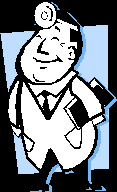
Cardinal Questions
These questions are essential to
understanding a problem; but they should be asked ONLY
after
first
allowing
the patient initial time to tell, in their own words, about
their concerns.
A good clinician requires detailed information to reach an
accurate diagnosis.
But, as we have just discussed, a good clinician today
recognizes that their inquiry into "the specifics"
is best pursued after allowing the patient to speak and
after setting the agenda of prioritized concerns.
Once this has been accomplished, a patient not only
understands, but expects that their physician
must seek out the details.
A skillful clinician listens carefully for the
information they need as they allow the patient to speak.
In order to get a clear picture of the patients experience,
a physician needs answers to the following
cardinal questions:
Q: What is the Problem?
(Pain, Discomfort, Concern, etc)
Q: What does it feel like? (Quality)
Q: How severe is it?
(Intensity)
Q: Where is it Located?
(Location of Pain, Discomfort, etc)
Q: When did it Begin?
(Onset)
Q: What brings it On? What
Makes it Worse? (Aggravating factors)
Q: What Makes it Better?
(Alleviating factors)
Q: Does It Go Anywhere Else?
(Radiation pattern)
Q: Are there any other
Symptoms you are having?
(Associated
symptoms)
The physician may get much of
this information by simply listening as the patient speaks;
when necessary
the physician
should ask the patient the above questions, or
ask for clarification if the patient has been
vague in their description.
____________________________________________________
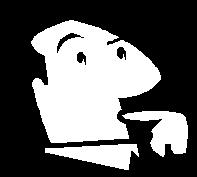 Hypothesis Driven History
Hypothesis Driven History
Taking a skillful history,
however, is
about more than simply asking the cardinal questions.
A skillful clinician is listening to what the patient is
saying, and trying to fit the information into a
recognizable
pattern known as a "diagnosis."
The Hypothesis Driven
History reflects the importance
of "pattern recognition" in
clinical diagnostic reasoning.
An experienced
and skilled clinician recognizes the
"clustering" and "association" of symptoms, signs
and test
results which are often expressed
in a pattern.
(Pattern recognition).
As part of the process of pattern
recognition, a skilled clinician is always
interpreting from among the
"pertinent positive" and
"pertinent
negative"
symptoms in the history (as well
as on
the physical exam).
We shall come back to this, but first let's take a look at
the process of human knowing, doing so through the lens of a clinician...
_____________________________________________________

Clinical
Reasoning
The Process
Diagnostic reasoning can be
understood as a cognitive process that moves through the
following steps:
Experiencing / Understanding /
Judging / Deciding / Acting
|
EXPERIENCE
|
UNDERSTANDING
|
JUDGING
|
DECIDING
|
ACTION |
|
Is. |
What could it be? |
What is the evidence? |
What do I ultimately believe it is? |
What should I do? |
This is a continually
recycling process!
That's why clinicians
must make rounds each day!
The Steps
1.
Experience
Clinical reasoning can take as its 'starting point' any
of a variety of 'experiences'
(i.e.
Patient history, physical exam findings, lab results,
radiologic findings, biopsy reports).
____________________________________________________________
2.
Understanding
We then move from the
experience to understanding by drawing upon categories of intelligibility --
those
disease conditions that
form the list of explanatory
possibilities or 'diagnoses'.
We call this part of categorical
understanding --differential diagnosis.
This is the second step in the process --
it is our attempt to
understand what may be going on with a
patient!
A good clinician is
someone who reads enough to learn about all the
possible causes to explain a
process.
Since not all diagnostic possibilities (or categories of understanding) are
equally adequate or relevant
explanations, our attempt to understand must ultimately be
confirmed and the final
diagnosis determined.
_____________________________________________________________
3.
Judgment
To do this we must exercise judgment
--to determine which among our
list of possibilities is the most
plausible explanation.
We do this by weighing evidence.
Judgment is the process of
weighing evidence. (Hence the need for evidence-based
medicine --EBM).
_____________________________________________________________
4.
Decision
Judgment leads us to a final decision.
In deciding, we move from differential diagnosis to final
diagnosis.
_____________________________________________________________
5.
Action
Reaching a decision then
moves us forward into
action (either further
diagnostic
investigation or therapy)
on behalf of the patient. "We don't know simply to know, we know
so that we can act!"
______________________________________________________________
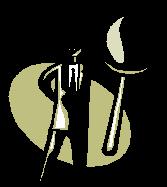 Diagnostic
Thinking
Diagnostic
Thinking
To summarize, clinical
reasoning is a cognitive process -- one that conforms
to those
epistemological
mechanisms
by which we come to knowledge and proceed to appropriate
action.
Those mechanisms are:
Experiencing / Understanding /
Judging / Deciding / Acting
Each of the steps in
this process has a corresponding 'virtue' that makes the
process most effective:
|
Experiencing |
Understanding |
Judging |
Deciding |
Acting
|
|
BE
ATTENTIVE! |
BE
INTELLIGENT! |
BE
REASONABLE! |
BE
RESPONSIBLE! |
BE
MORAL!
BE
PROFESSIONAL! |
BEWARE!
Failure to perform any of the steps properly, skews the
successive steps in the whole process!
A good clinician must take seriously ALL the steps in the
process that
make up clinical reasoning...
If I haven't
ATTENTIVELY examined the patient, or reviewed at the lab results I may miss important
initial information
If I don't read enough pathology or learn about disease states, I will
not be an INTELLIGENT diagnostician -"beware of the
physician with a single diagnosis."
If I don't weigh evidence in a careful and REASONABLE fashion I will be
inaccurate in my diagnostic judgment
Having weighed the evidence, I
am RESPONSIBLE for making a final decision and communicating
my working diagnosis
Once I have decided the cause of the problem, I must
implement my treatment, acting in a proper, proportionate,
ethical and PROFESSIONAL fashion
________________________________________________________________
This process applies
no matter what experience serves as the starting or
entry point...
Three Examples:
(to demonstrate different starting points in the process of
clinical reasoning)
|
The
Is...
(Experience) |
What could it
be? (Understanding) |
What tells me what it is?
(Judging) |
What it is...
(Deciding) |
What I do now?
(Action)
|

Symptom:
Chest pain
|
Angina?
Biliary Colic?
Aortic Dissection?
Esophageal Reflux?
|
+EKG?
+GB Ultrasound?
+Abdominal CT scan?
+EGD (Upper endoscopy) |
Final
Dx?
(depends on the evidence generated by the tests) |
Heart
Catheterization?
Cholecystectomy?
Vascular Surgery?
Acid blocking Rx? |

EKG finding:
ST segment elevation
|
Ischemia, heart attack?
Benign J point elevation?
Pericarditis? |
Troponin levels
Healthy, muscular male
no risk factors
Friction Rub, |
Final
Dx? |
Urgent
Heart Catheterization
Reassure patient re:
normal variant.
Rx with anti-inflammatory
|

Lab Report:
Blood Culture
growing
Gram + cocci
|
Bacteremia?
Contaminant? |
Await
Bacterial Species identification
How many bottles positive ? |
Bacteremia?
Contamininat? |
Start
Antibiotic Rx
Ignore, if contaminant! |
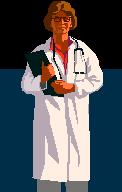 Hypothesis Driven History
Taking
Hypothesis Driven History
Taking
A hypothesis-driven-history
is derived when a clinician elicits a
history by not only
asking the Cardinal Questions, but, in addition, inquiring about
and interpreting the
"pertinent positive" and
"pertinent negative" elements in the history.
Since this is a process of
"pattern recognition," doing this well requires
knowing
about what "associates" with what and in
what "patterns."
The process of
pattern recognition takes
time and experience to master.
It requires
knowledge of pathology and physiology,
but we shall
begin now by
relying on memorization of profiles to help introduce you to
this process and
allow you to
begin making
pattern associations as you take a history from a patient.
_________________________________________________________________________________
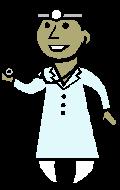 Lets
Get Started...
Lets
Get Started...
To allow you an
opportunity to take a hypothesis-driven history we will
explore two clinical problems -- chest pain and back pain --each of which
has a differential diagnosis
list with associated "pertinent positive" elements.
Studying/learning the
pattern of pertinent elements for each potential diagnosis
for a given complaint
will allow you to begin to conduct a patient history guided
by
your hypothesis of possible causes with their associated clinical symptoms.
Consider the following two
problems, their potential causes,
and the
pertinent positive findings associated with each.
|
Problem |
Possible Cause |
Possible Cause |
Possible Cause |
Possible Cause |
|
1.Chest pain |
|
|
|
|
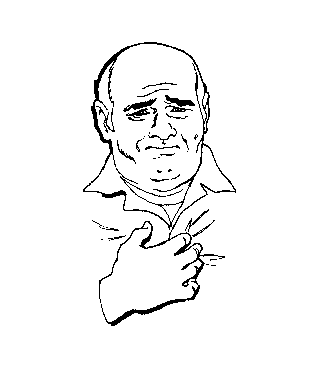 |
Heart Pain
Angina Pectoris |
Stomach Pain
Gastritis or Reflux esophagitis |
Chest Wall Pain
Costochondritis |
Lung Pain
Pleuritis
|
|
Cardinal Questions |
Pertinent Positive |
Pertinent Positive |
Pertinent Positive |
Pertinent Positive |
| Type of Pain |
"Pressure", "discomfort" |
"Burning" |
"Soreness" |
"Grabbing/catching" |
| Aggravating |
Exercise, or exertion |
Spicy foods, alcohol |
Movement |
Breathing deeply |
| Alleviating |
Resting |
Antacids |
Sit quietly |
Shallow breaths |
| Radiation |
Arm, shoulders, jaw, |
Pit of stomach |
No radiation |
No radiation |
| Associated Symptoms |
Short of breath, fatigue |
Belching, nausea, sour taste |
Feel fine |
Cough, Shortness of breath, fever |
|
Problem |
Possible Cause |
Possible Cause |
Possible Cause |
Possible Cause |
|
2.Back
pain |
|
|
|
|
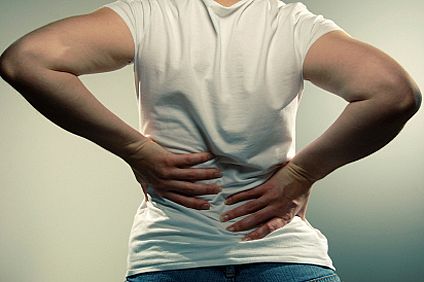 |
Spine Pain
Herniated lumbar disc |
Kidney Pain
Kidney stone, kidney infection |
Pancreas pain
Pancreatitis |
Skin Pain
Herpes Zoster "Shingles"
|
|
Cardinal Questions |
Pertinent Positive |
Pertinent Positive |
Pertinent Positive |
Pertinent Positive |
| Type of Pain |
Aching |
Sharp, comes and goes |
Deep boring pain |
Burning |
| Aggravating |
Bending, cough, sneeze |
Just comes on own |
Eating, drinking |
Always there |
| Alleviating |
Curl Up, knees flexed |
Just goes on own |
Lean Forward |
Nothing |
| Associated Symptoms |
Tingling, numbness foot |
Nausea, vomiting, can't void |
Vomiting, Not hungry |
Skin Rash, blisters |
| Radiation |
Down leg |
Groin |
Stomach and back |
Around my side |
Review and commit to memory
these summary profiles for the two problems (Chest Pain,
Back Pain)
____________________________________________________________________________________________________________________________________________
To make things simple, consider
the following profile summaries:
Chest Pain Profiles:
|
Heart (Angina): |
Pressure chest "discomfort" that occurs
with exertion, radiates to arms and shoulders, and may be associated with difficulty
breathing and fatigue |
|
Stomach
(Gastritis): |
Burning pain,
under the sternum, that occurs with certain foods or meds, may
be associated
with nausea and is relieved by antacids |
|
Chest Wall (Costochondritis): |
Soreness of chest wall, made worse with movement or touch in
an otherwise well patient |
|
Lung (Pleuritis): |
Sharp, catching pain
anywhere in chest that occurs with breathing that may be associated
with shortness of breath |
Back Pain Profiles:
|
Spine (Sciatica) |
Aching pain in back going down the
leg, made worse with movement, coughing, and often
associated with numbness leg/foot
|
|
Kidney (Stone): |
Sharp back pain coming/going in
waves extending to groin, and associated with nausea and
vomiting, possibly blood in urine |
|
Pancreas (Pancreatitis): |
Deep boring pain in back and
stomach, brought on by eating drinking, accompanied by
vomiting, which is better leaning forward |
|
Skin (Shingles):
|
Diffuse burning pain, with altered skin sensation, radiating
halfway around side, accompanied by a blistering rash |
 In
conclusion...
In
conclusion...
You are asked to
memorize the above profiles so that when you are asked to
interview a standardized patient who presents with either
chest pain or back pain you can:
1. Allow the patient to
tell you about what they are experiencing.
2. Elicit the history (for either chest
pain or back pain) driven by your awareness of the possible causes for
chest or back pain so that you can
listen for, ask about and
interpret the "pattern" of pertinent positive
elements.
3. Explain to the patient what you
think might be going on before you leave the
room to "speak to
your attending."
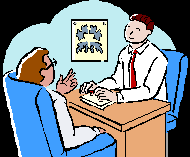
______________________________________________________
 Self Assessment Questions
Self Assessment Questions
Choose the single best
right answer.
Answers for these questions can be found at the bottom of
the page.
1. Patient Centered Medicine
emphasizes:
a.
Making a speedy diagnosis
b.
Allowing the patient to feel heard and understood
c.
Ordering as few tests as necessary
d.
Giving control to the patient
2. The Medical Interview should
accomplish which of the following?
a.
Gathering information
b.
Building relationship and trust
c.
Educating the patient
d. All
of the above
3. Allowing the patient to tell their story takes too long.
A good clinician
proceeds directly to asking the questions they need to make a
diagnosis.
a. True
b.
False
4. A good clinician should begin
the history:
a. Getting to the details
b. Asking
open ended questions
c. Finding
out when the complaint began
d. Setting
time limits on the discussion
5. The Hypothesis Driven
History:
a. Is based
on what the patient believes is going on
b. Collects
information first, then comes to a diagnosis
c. Takes
advantage of the process of pattern recognition
d. Allows the
patient to set the priorities
6. Clinical reasoning is a process involving which of
the following phenomena?
a. An
experience
b.
Understanding
c. Judging
d. Deciding
e. All of the
above
7. Success in clinical reasoning requires which
of the following virtues
a. Properly
attending to the patient and laboratory results
b. Skill in
generating a differential diagnostic list
c. Carefully
weighing all the pertinent information
d. All of the
above
8. Shortchanging any of the steps in the process of
clinical reasoning can adversely
influence subsequent steps.
a. True
b. False
9. The process of clinical
reasoning is a continually recycling process.
a. True
b. False
10. The Hypothesis Driven History relies upon a clinician's
awareness of:
a. The single cause of a given problem
b. The pertinent
symptoms that are associated with a given cause
c. The results of
all lab tests
d. All of the above
______________________________________________________________________________________________________
Answers:
1. b 2. d 3. b 4. b 5. c
6. e 7. d 8. a 9. a 10. b
_________________________________________________________________________________________
 Hypothesis-Driven History Taking
Hypothesis-Driven History Taking








 Self Assessment Questions
Self Assessment Questions